Fall For Dance North: A jazz double bill that’s smart and sassy - Vancouver Ballet Society
- Home
- Reviews 2020 - 2023
- Fall For Dance North: A jazz double bill that’s smart and sassy
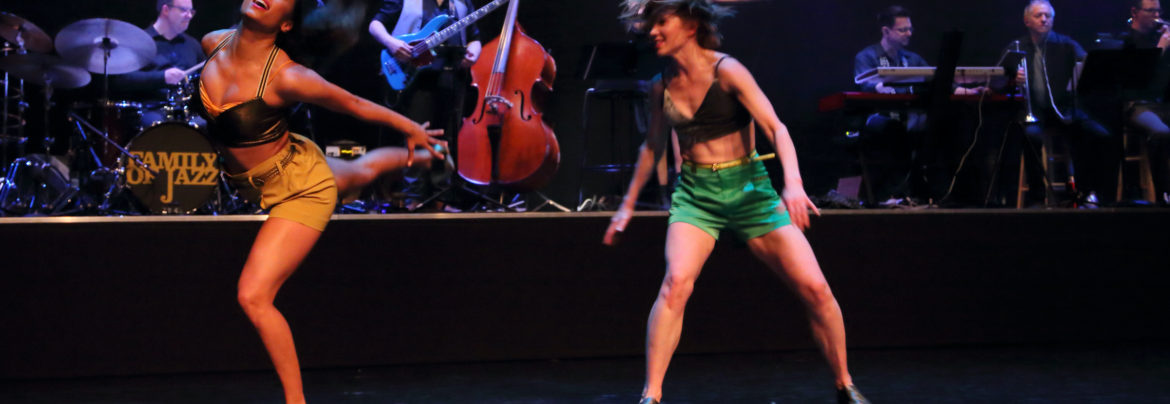
By Kathleen Smith
Fall for Dance North invited the artistic directors of two jazz-inspired dance companies to create in residence over the past two years. On September 30, for the Toronto festival’s return to mainstage live performance, local company Holla Jazz and Calgary’s Decidedly Jazz Danceworks (DJD) offered two distinct approaches to melding jazz dance and live music. It made for a fascinating double bill of performer/musician interplay, historical homage, and some red-hot physicality.
For Margarita, choreographer Natasha Powell was inspired by the history of jazz performance, specifically as lived by variety theatre showgirls and chorines post-World War Two. Powell worked with composer Sabine Ndalamba on an original score that sets a smoky mood while still holding space for the musicians to improvise and interact with the dancers. The show’s intimate opening scenes evoke the backstage atmosphere of this bygone era as the dancers stretch and don their shoes, take a few too many hits from a flask, and adjust their dressing gowns and sparkly costumes. There are hints of the contemporary, too, with group selfies.
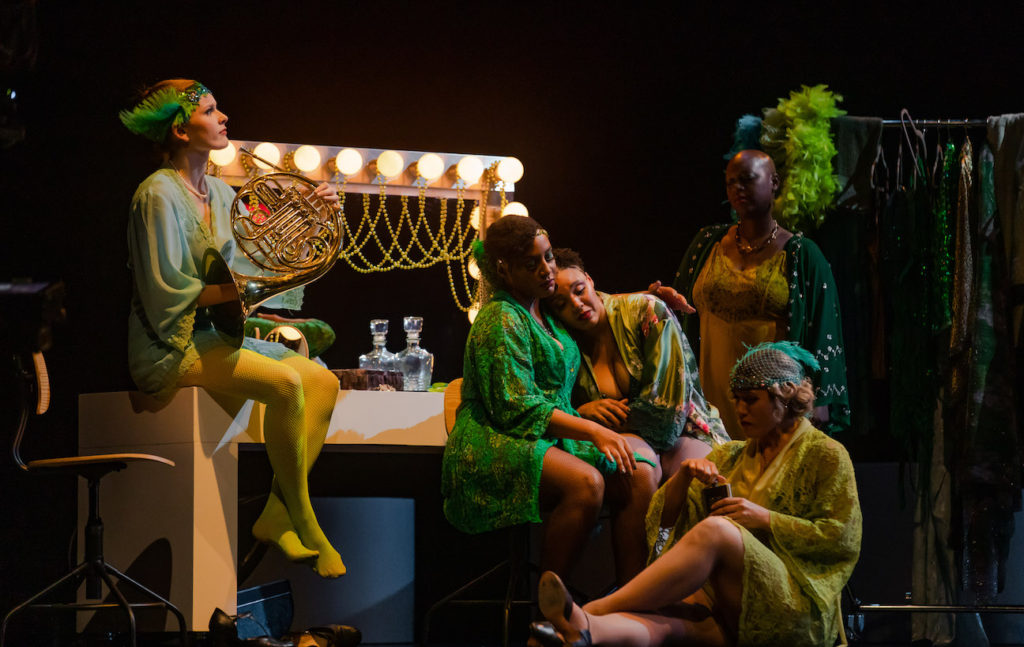
Across the way, musicians inhabit a third of the stage forming a tight ensemble with drums, keyboards, standup bass, saxophone, and clarinet, with Ndalamba on bass guitar.
As the dressing room backdrop slides away, the performers begin to trace a historical through-line with sultry poses and familiar elements of vernacular jazz — bevels, stomps, Charleston steps, shimmies, buck and wing tap combinations, and more. We also glimpse hip hop style moves, from vogue, locking, and waacking. Powell’s choreography underscores the idea that modern movement is an amalgam of steps, innovations, and moments from a collective past.
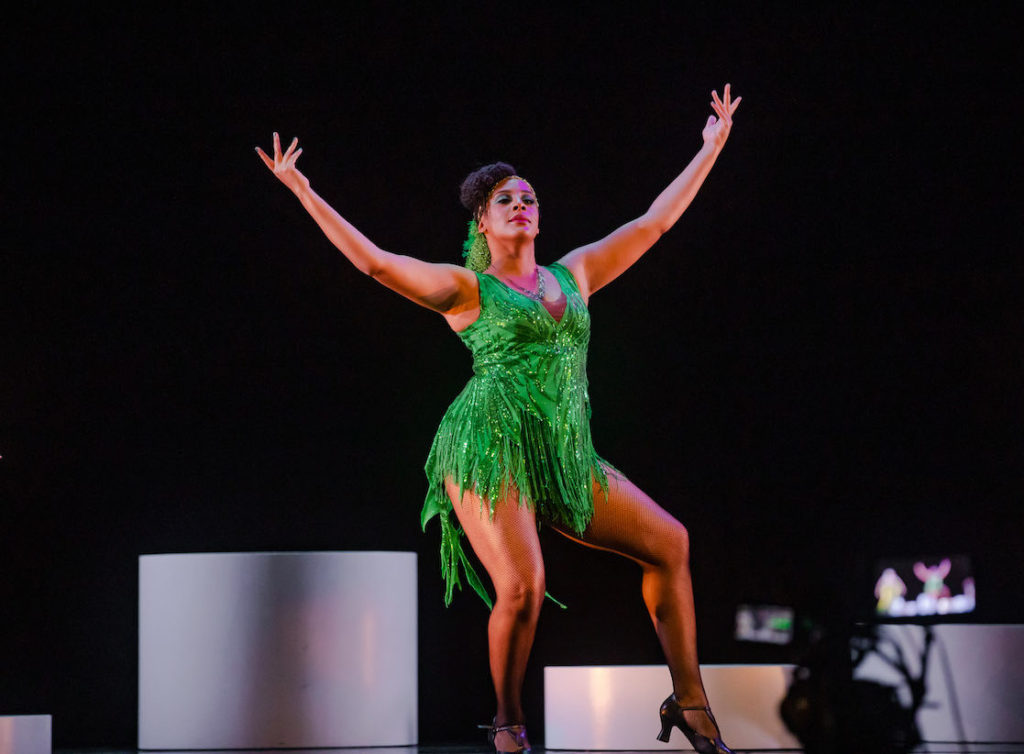
The narrative is a familiar one. There’s a newbie showgirl (danced with bright sincerity by Madelyn Miyashita, who also plays a mean French horn at one point) who must be schooled in the ways of the ensemble. Several characters move with the tough edges that come with experience: Caroline ‘Lady C’ Fraser’s role (the characters are not given names) is languid but no pushover with her co-workers. Others, like Ashley ‘Colours’ Perez, are regal, oozing both gravitas and sass as they undulate, arms up in the classic showgirl port de bras. Each performer approaches their character in a unique way and it’s this showcasing of their individual humanity that provides Margarita with much of its power.
Margarita’s detailed and moody chamber work is followed on the program by Kimberley Cooper’s Family of Jazz, DJD’s stage-filling crowd-pleaser that both opens and closes with big beats and energetic dynamism. A six-piece jazz outfit directed by composer/bassist Ruben de Toledo holds court in a long line upstage; it’s anchored by charismatic vocalist Karimah, who also provides lyrical content for many of the songs. Drumming drives the show from the opening moments with Raul Gomez Tabera devising propulsive rhythms for the congas and Jonathan McCaslin holding down a more conventional drum kit.
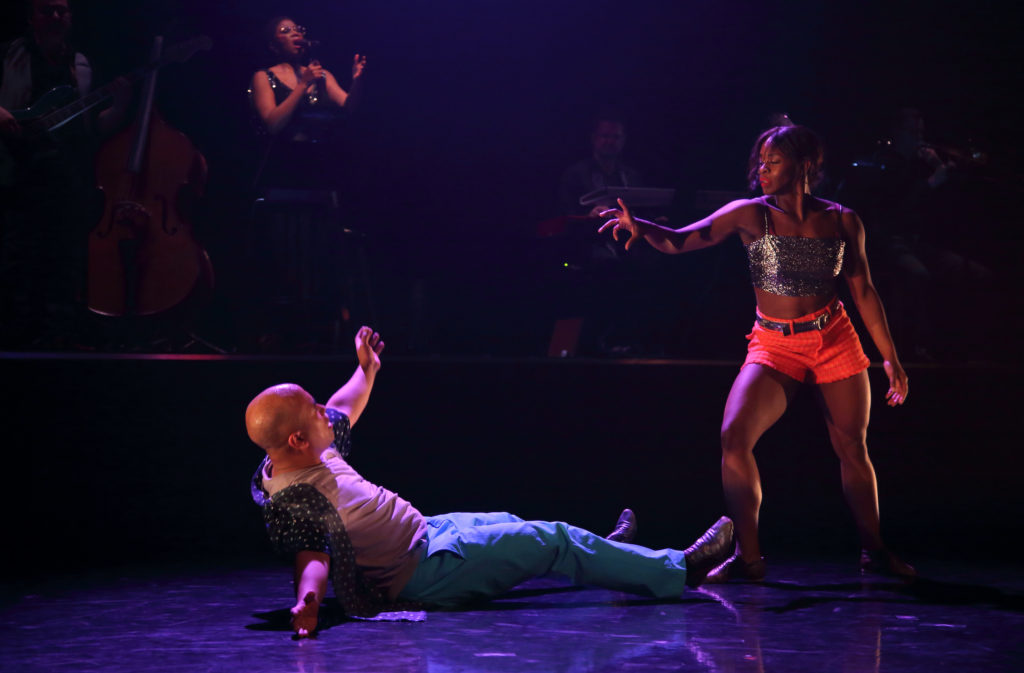
Downstage, Cooper’s company of nine dancers shimmy, kick, and strut in a furious barrage of motion. They’re athletic but also soulful, a potent blend of qualities embodied by the likes of Natasha Korney, who gets many moments to shine — literally, too, in a sequined blazer over orange short shorts (Sarah Doucet did the eye-catching costumes). Korney’s duet with Jason Owin F. Galeo for “Trouble in this World” is an intricate and thoughtful take on interpersonal power dynamics. As the couple push and pull at each other, the ensemble leans in and out of the performance space, echoing Karimah’s vocal tonal shifts. This is such clever staging, sensitive to the music, the movement, and the meaning all at once.
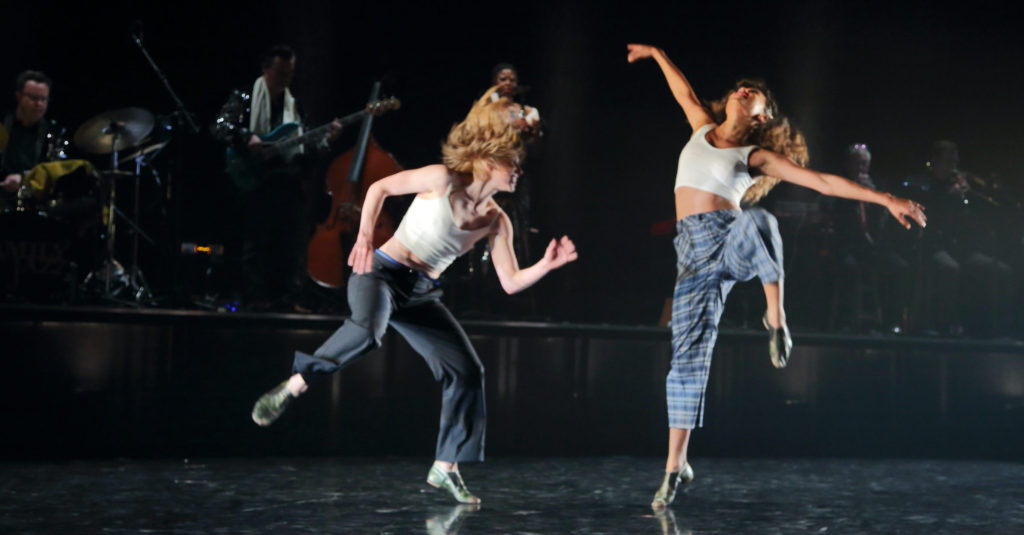
As Family of Jazz progresses, there are further ebbs and flows to the action with slower numbers and cooler tempos. There’s a great relaxed rhythms section where Karimah descends from the orchestra pedestal and moves with the company before introducing them by name one by one. As Karimah moves back to the musician’s line, the dancers experiment with syncopations and harmony, falling in and out of sync with each other, layering movement by following different threads within the music. There are also funky sections, like the grindy duet for Kaya Irwin and Sabrina Comanescu, with a growling trombone providing mood to spare. There are nods to gospel and blues modalities in the “Where You Gonna Run To” section and elsewhere.
Family of Jazz feels like a really great jazz music concert, with some really great dancing happening at the same time. Which is undoubtedly the intent. As Cooper put it in the show notes, “there’s nothing to get and everything to feel.” The feels are fun, but I believe there’s lots to “get” as well for those who look closely.
This inspired double bill demonstrates the surprising range of what jazz can accomplish in the theatre space. If Family of Jazz is easier for an audience to get behind as an expression of joyous sound and physical exuberance, it’s also less ambitious than Powell’s Margarita, which offers viewers a more introspective riff on the multivalent jazz form. It sure is cause for celebration to be able to experience both on the same night.

